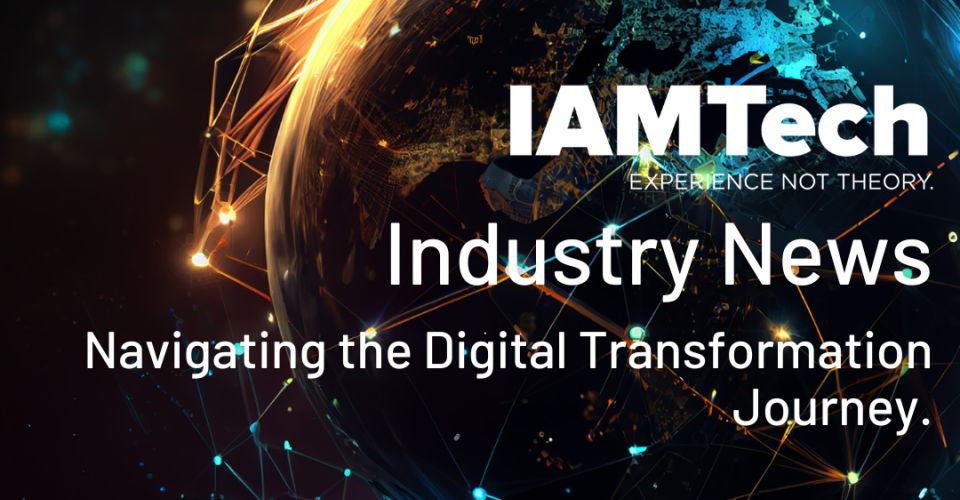
“At least 40% of all businesses will die in the next ten years… if they don’t figure out how to change their entire company to accommodate new technologies.” —JOHN CHAMBERS, EXECUTIVE CHAIRMAN, CISCO SYSTEM
There is no alternative to digital transformation. Visionary companies will carve out new strategic options for themselves — those that don’t adapt will fail.”— JEFF BEZOS, AMAZON FOUNDER
Introduction
Digital transformation represents the integration of cutting-edge digital technologies across all parts of a business. This holistic approach results in a profound metamorphosis of the organisation's core operations, the way it offers products and services, and its interactions with customers. It signifies a comprehensive shift towards a digitally driven, more agile, and customer-centric business model.
In today's fast-paced industrial landscape, digital transformation is no longer a choice; it's a necessity. This wave of change brings with it the promise of increased efficiency, competitiveness, and innovation. However, there's a significant obstacle in the path of progress – fear! Many of a business’s employees, accustomed to traditional methods, may hesitate to embrace digital solutions. In this blog post, we explore how companies can address these concerns and help their employees successfully navigate the digital transformation journey.
Let's start by understanding why some workers fear digital transformation:
“This is not just a question of changing skillset. It is a change of mindset.” – JULIE DODD, AUTHOR
The Comfort Zone Syndrome
Humans are creatures of habit, and we often resist change when we're comfortable with established routines and processes. It's natural to fear the unknown, but staying within our comfort zones can hinder growth and progress.
Lack of Digital Literacy
Digital literacy is a crucial skill in today's world. Employees who lack knowledge of digital tools and technologies may fear them. Education and training are essential to bridge this knowledge gap.
Job Security Concerns
Another common fear revolves around job security. Some employees worry that automation and digitalization may replace their roles. It's important to communicate that digital solutions can complement human labour and enhance job roles, rather than replacing them. To alleviate these fears, it's essential to highlight the numerous benefits of digital transformation:
Efficiency and Productivity
Digital tools can streamline processes, reduce manual labour, and significantly enhance overall productivity. This means less repetitive work and more time for creative and strategic tasks.
Data-Driven Decision-Making
Digital solutions provide access to vast amounts of data, empowering organisations to make informed decisions. Data analytics can lead to better strategies, improved customer experiences, and sustainable growth.
Empowerment Through Technology
Digital solutions empower workers to perform their jobs more effectively. Whether it's through automation, real-time monitoring, or augmented reality, technology can make tasks easier and more efficient.
"A significant reason for the failure of IT projects is often the lack of user adoption. It's a misconception among managers that simply introducing a new software tool will automatically lead to enthusiastic usage by personnel. In reality, this is rarely the case, and successful change management practices are essential to ensure widespread adoption." – ROSS COULMAN, MD – IAMTECH.
To help workers overcome their fears, organisations should focus on bridging the knowledge gap:
Training and Education
Investing in training programs to enhance digital literacy among employees is crucial. These programs should be ongoing to keep pace with evolving technologies.
Inclusive Communication
Open and transparent communication from leadership is key. Employees should be kept informed about the transformation process, its goals, and how they fit into the bigger picture.
Mentorship and Support
Mentorship programs and peer support can help employees adapt to digital changes. Learning from colleagues who have successfully embraced technology can be reassuring and inspiring.
Fostering a culture of adaptability and continuous learning is essential:
Encouraging Curiosity
Organisations should encourage curiosity and a willingness to learn new digital skills. This can be achieved by promoting a growth mindset and providing opportunities for experimentation.
Rewarding Innovation
Recognising and rewarding innovative ideas can motivate employees to embrace digital solutions. Celebrating successes and sharing best practices can inspire others to get involved.
Real-World Success Stories
To inspire your workforce, share real-world success stories from companies that have navigated the digital transformation journey successfully. Highlight the role of their employees in driving change and achieving remarkable results.
Conclusion
“You can’t delegate digital transformation for your company… You and your executives have to own it! Executives need to engage, embrace and adopt new ways of working with the latest and emerging technologies.” — BARRY ROSS, CEO AND CO-FOUNDER, ROSS & ROSS INTERNATIONAL
In conclusion, overcoming digital fear is a collaborative effort between management and employees. It's essential to view your workforce as partners in the digital journey, rather than obstacles to change. By addressing their concerns, providing education and support, and fostering a culture of continuous learning, organisations can not only navigate the digital transformation journey but also unlock the full potential of their workforce and technology.
Did this article help you conquer your digital fears? If it did, don't hesitate to reach out to IAMTech today for a complimentary demo. We're committed to making your transition to digital solutions as smooth as possible, offering comprehensive system training and ongoing support. www.iamtech.com
Together, we can conquer digital fear and embrace the boundless possibilities of technology in industry. Stay tuned for more insights and updates from IAMTech!
Appendix
For those eager to dive deeper into digital transformation and digital literacy, here are some additional resources to explore:
- Recommended Books:
- Designed for Digital: How to Architect Your Business for Sustained Success - Author: Jeanne Ross, Martin Mocker and Cynthia Beath
- Digital Trailblazer: Essential Lessons to Jumpstart Transformation and Accelerate Your Technology Leadership - Author: Isaac Sacolick
- See Sooner, Act Faster: How Vigilant Leaders Thrive in an Era of Digital Turbulence (Management on the Cutting Edge) - Author: George Day and Paul Schoemaker




































